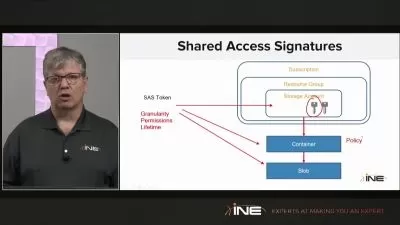Multi Infrastructure for beginners
1:08:22
Description
You are going to master the Multi Infrastructure and other vital concepts
What You'll Learn?
- You are going to learn Multi Infrastructure
- You are going to learn Contextual Relationship
- You are going to Encoder and Decoder
- You are going to learn Status of decoder
Who is this for?
What You Need to Know?
More details
DescriptionMulti infrastructure refers to the use of services and resources from multiple service providers , such as Amazon Web Services, Microsoft Azure, and Google Cloud Platform, within a single enterprise's IT environment. This strategy allows organizations to leverage the unique strengths and services of different cloud platforms, enhancing flexibility, resilience, and performance. One of the key advantages of multi-cloud is redundancy. By distributing workloads across multiple cloud providers, organizations can mitigate the risks associated with service outages or provider-specific failures, thus ensuring business continuity
Performance optimization is another critical benefit of multi-cloud infrastructure. Different CSPs excel in specific areas such as storage, machine learning, or networking. By strategically deploying workloads to the most suitable platform, companies can improve application performance and user experience. For example, an organization might use for machine learning and for analytics, ensuring optimal performance in both areas. Multi-cloud infrastructure, however, presents challenges in management and security. Coordinating between different cloud environments requires sophisticated orchestration tools and a clear governance model to ensure consistency across platforms. Security measures, such as identity management and data encryption, must be standardized across providers to prevent vulnerabilities.
multi-cloud infrastructure enables organizations to harness the strengths of multiple CSPs, improving resilience, performance, and flexibility. However, it requires careful planning and management to fully realize its potential.
Who this course is for:
- If you want to learn with detailed examples for every concept, this course will be for you
Multi infrastructure refers to the use of services and resources from multiple service providers , such as Amazon Web Services, Microsoft Azure, and Google Cloud Platform, within a single enterprise's IT environment. This strategy allows organizations to leverage the unique strengths and services of different cloud platforms, enhancing flexibility, resilience, and performance. One of the key advantages of multi-cloud is redundancy. By distributing workloads across multiple cloud providers, organizations can mitigate the risks associated with service outages or provider-specific failures, thus ensuring business continuity
Performance optimization is another critical benefit of multi-cloud infrastructure. Different CSPs excel in specific areas such as storage, machine learning, or networking. By strategically deploying workloads to the most suitable platform, companies can improve application performance and user experience. For example, an organization might use for machine learning and for analytics, ensuring optimal performance in both areas. Multi-cloud infrastructure, however, presents challenges in management and security. Coordinating between different cloud environments requires sophisticated orchestration tools and a clear governance model to ensure consistency across platforms. Security measures, such as identity management and data encryption, must be standardized across providers to prevent vulnerabilities.
multi-cloud infrastructure enables organizations to harness the strengths of multiple CSPs, improving resilience, performance, and flexibility. However, it requires careful planning and management to fully realize its potential.
Who this course is for:
- If you want to learn with detailed examples for every concept, this course will be for you
User Reviews
Rating

Udemy
View courses Udemy- language english
- Training sessions 10
- duration 1:08:22
- Release Date 2025/03/08









